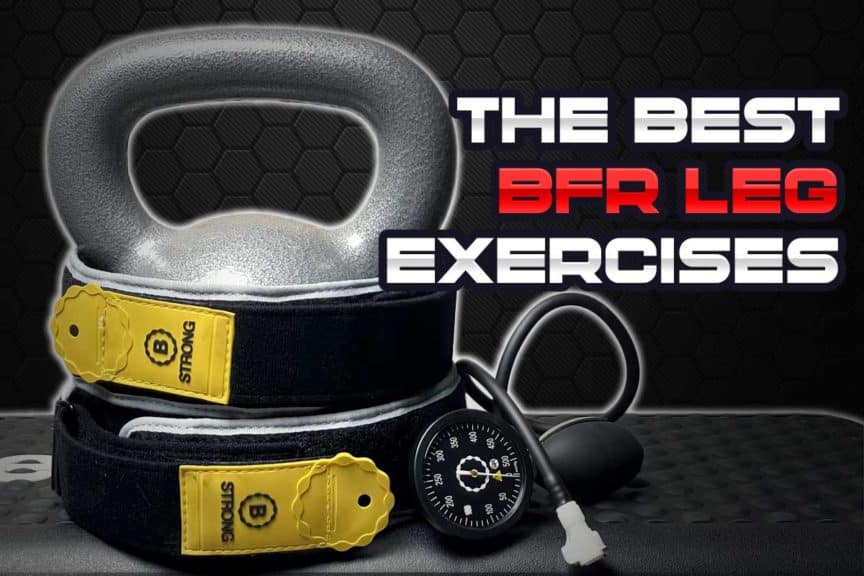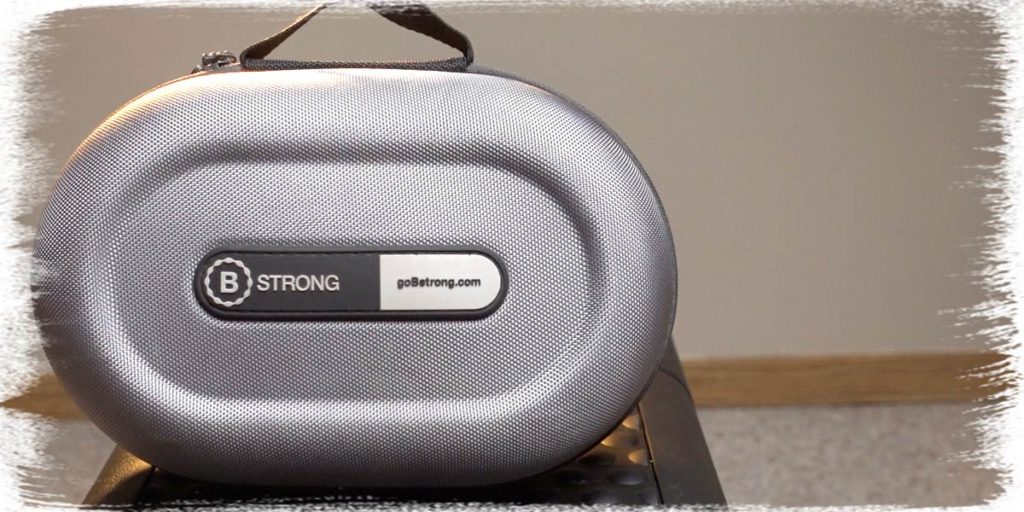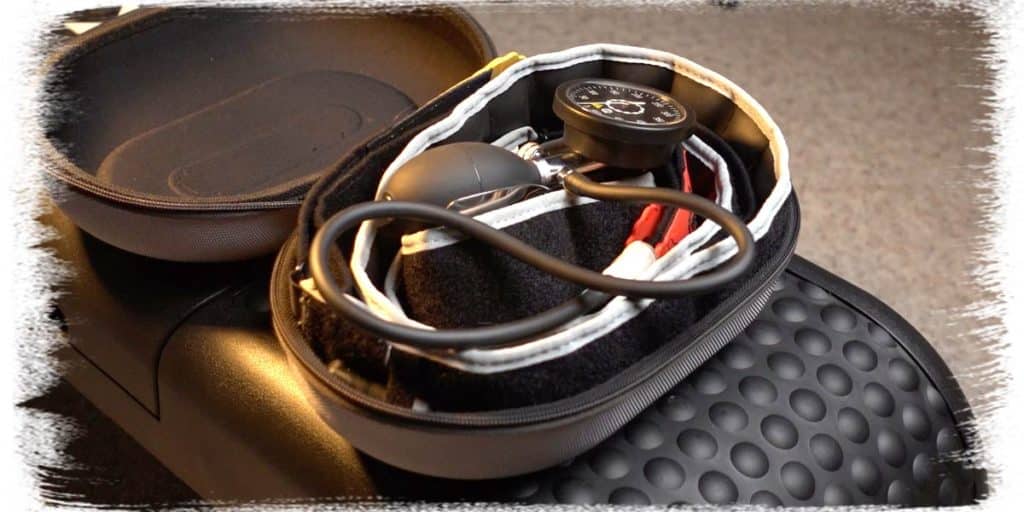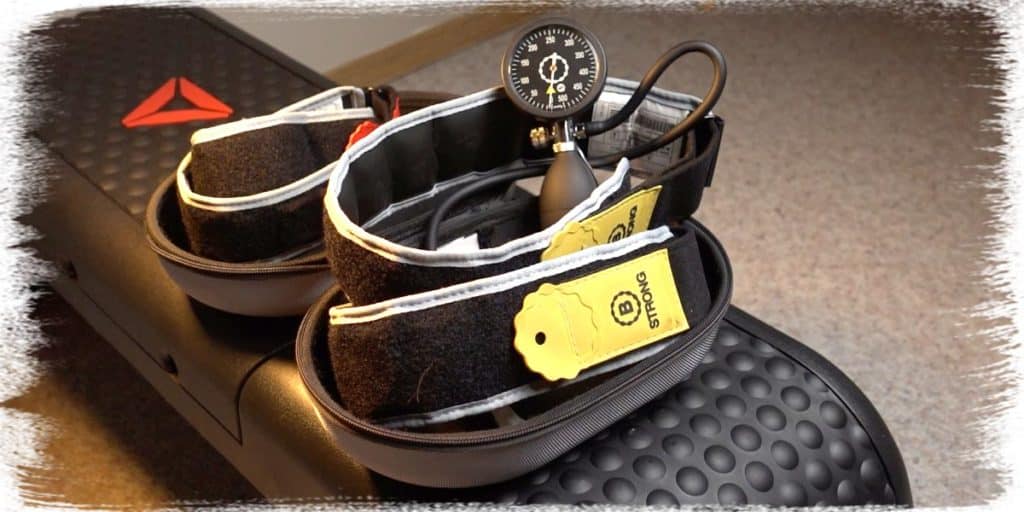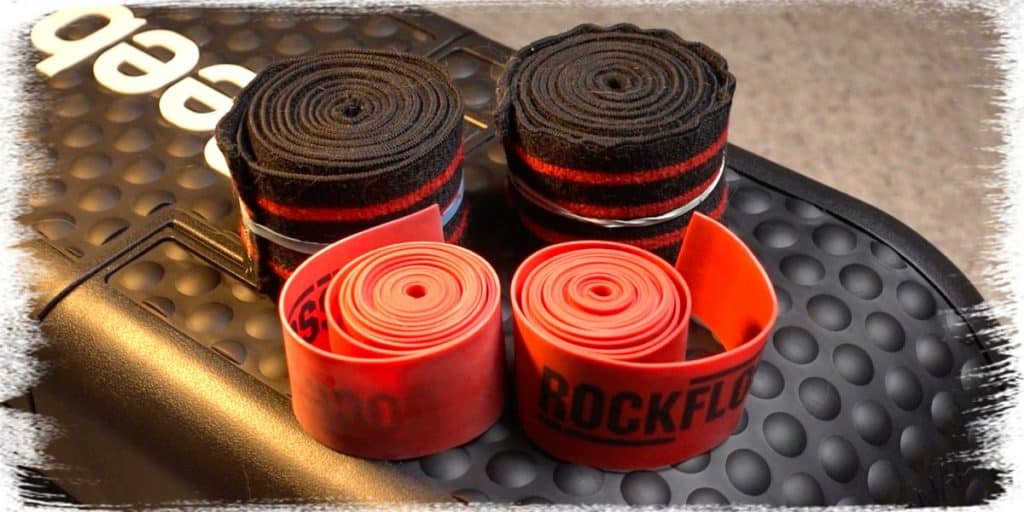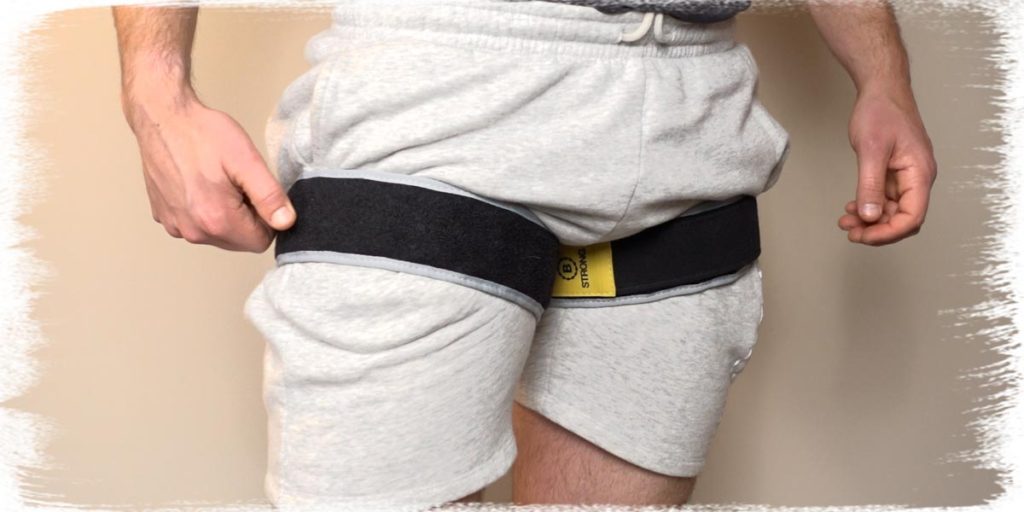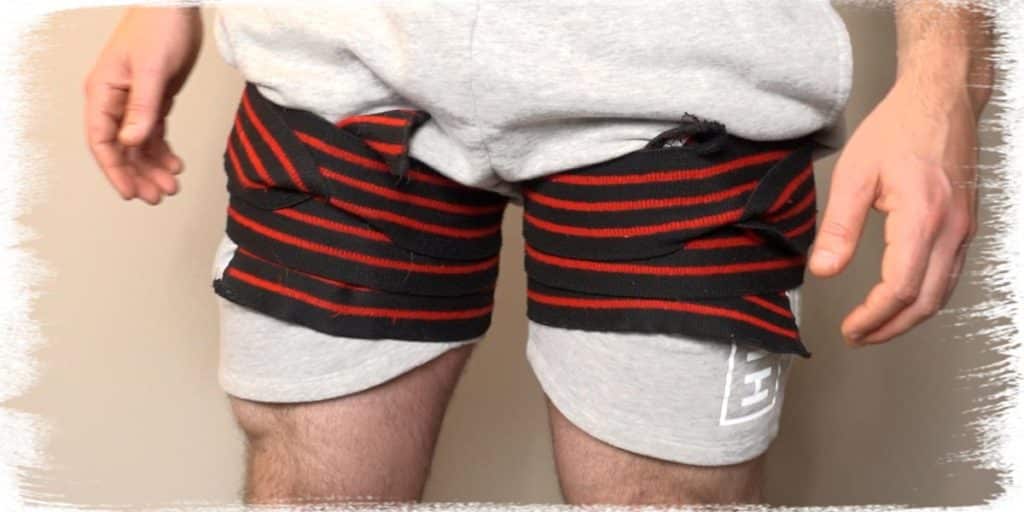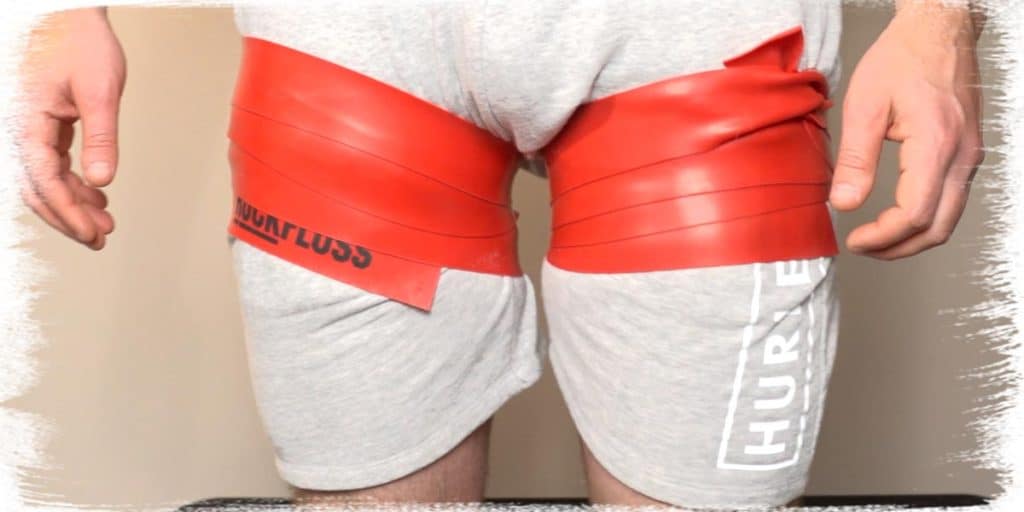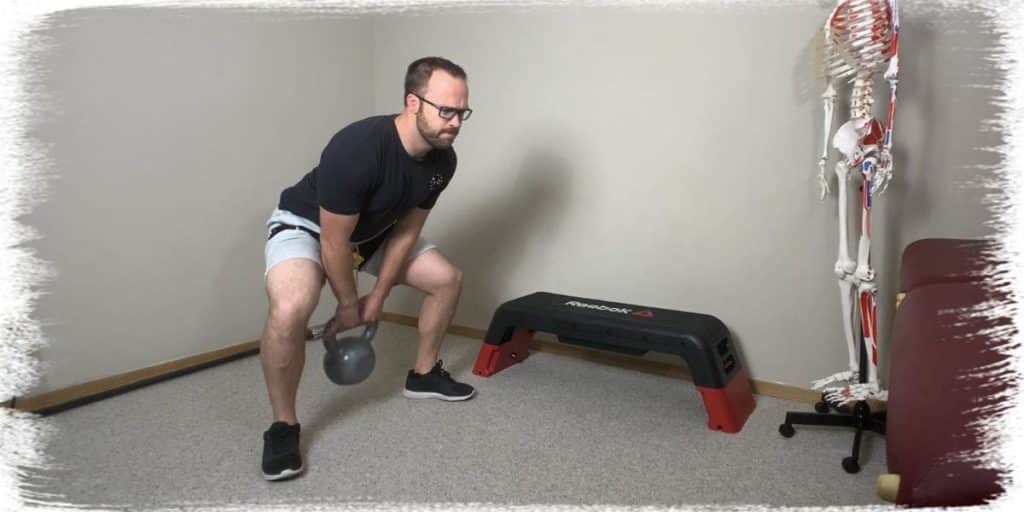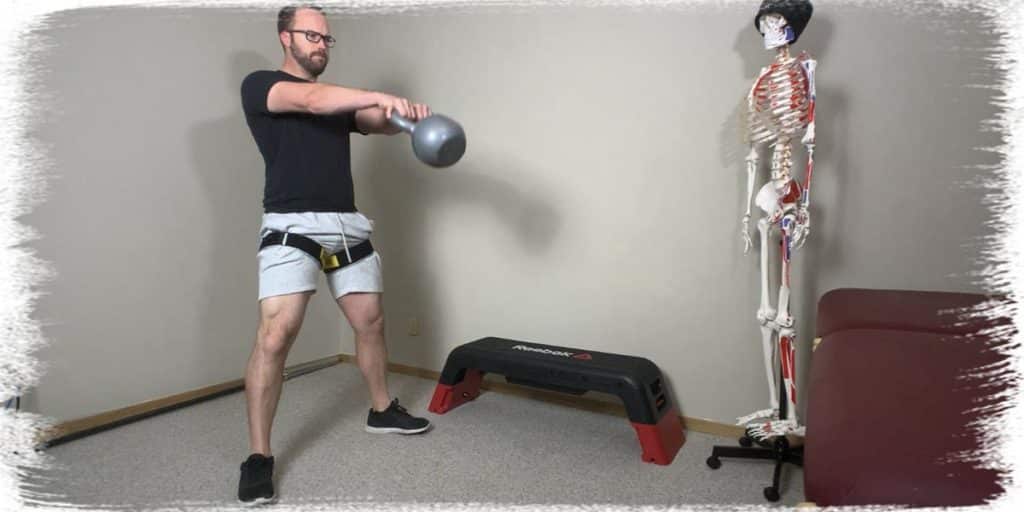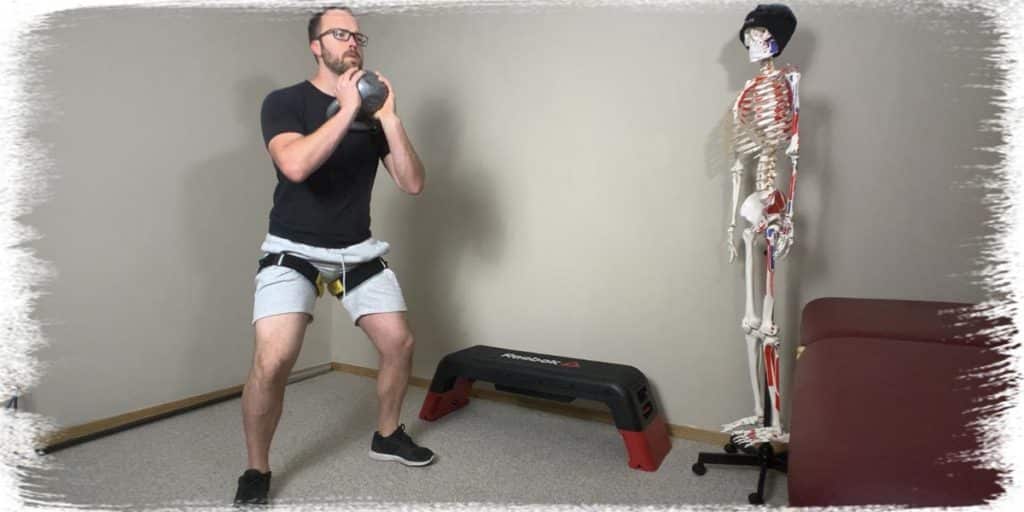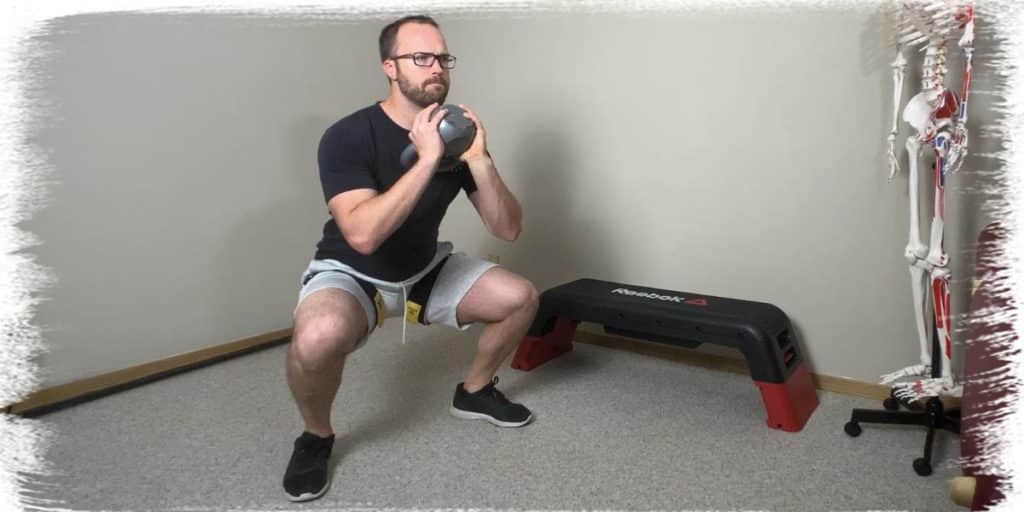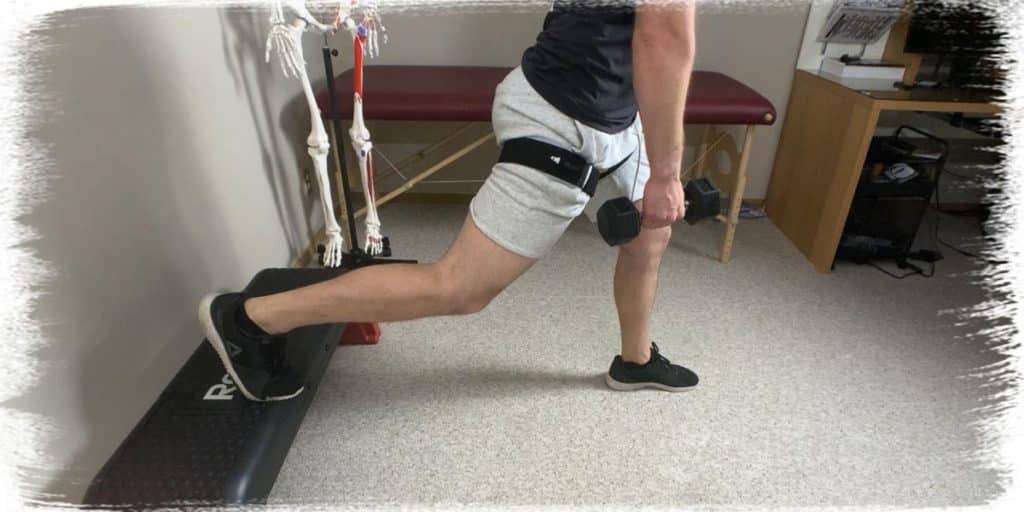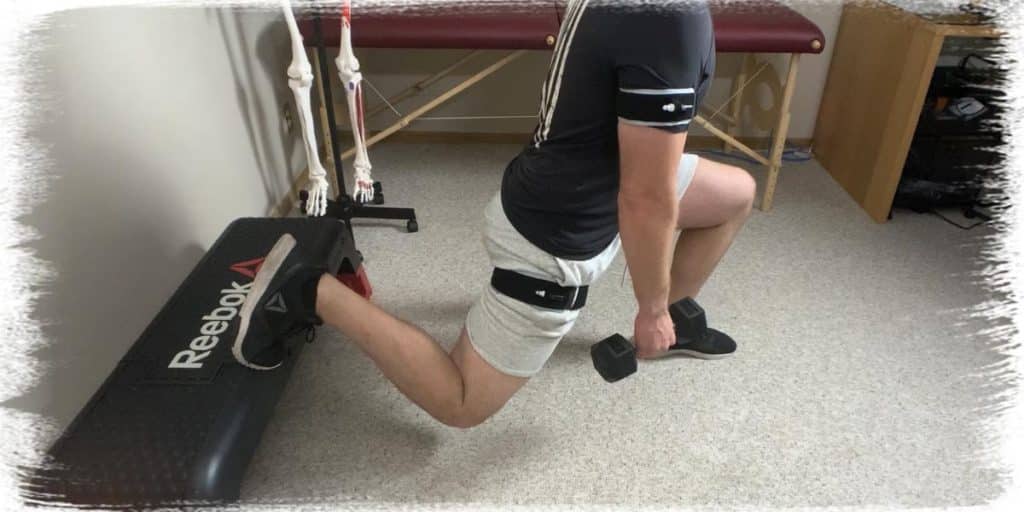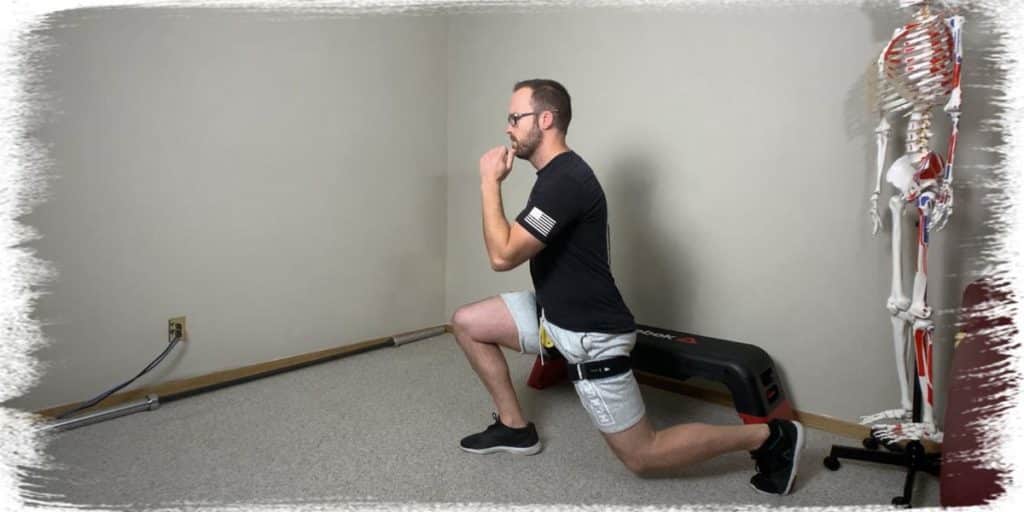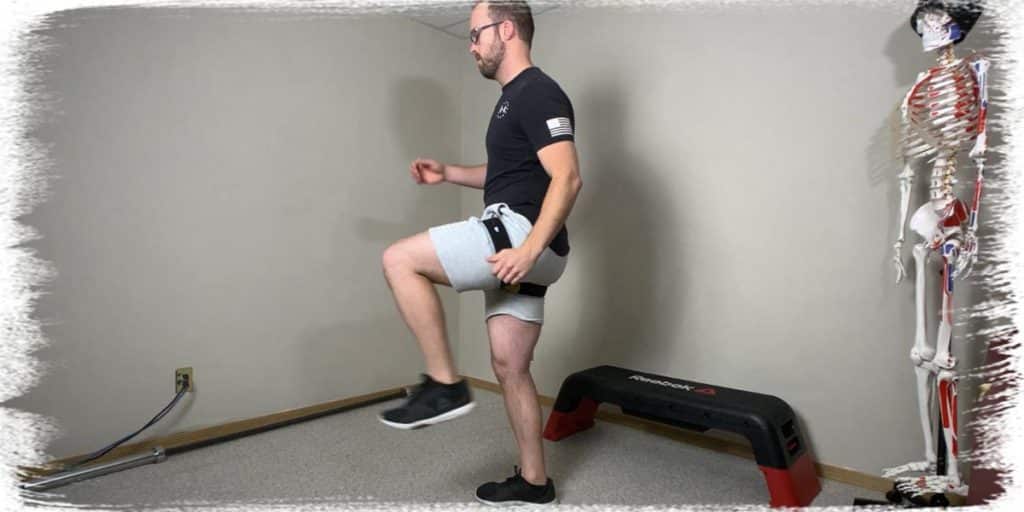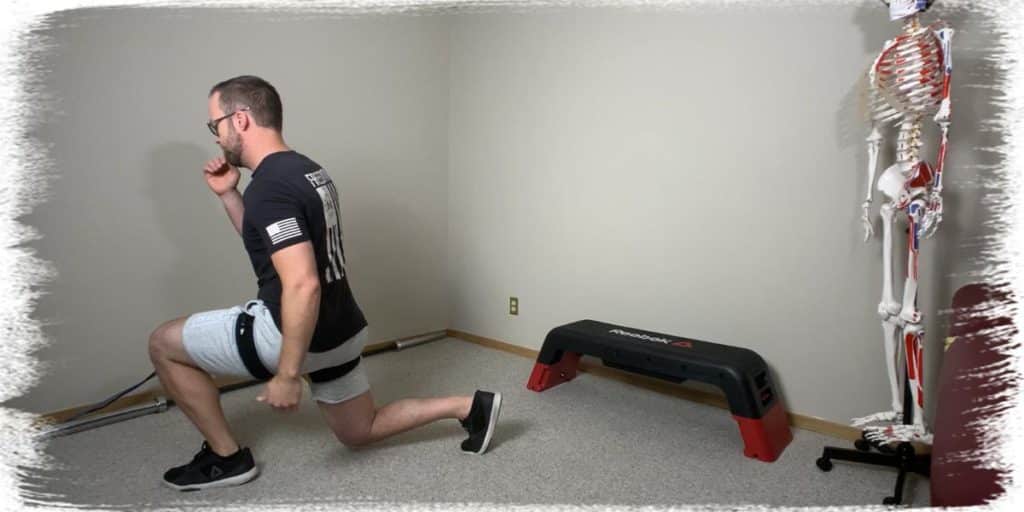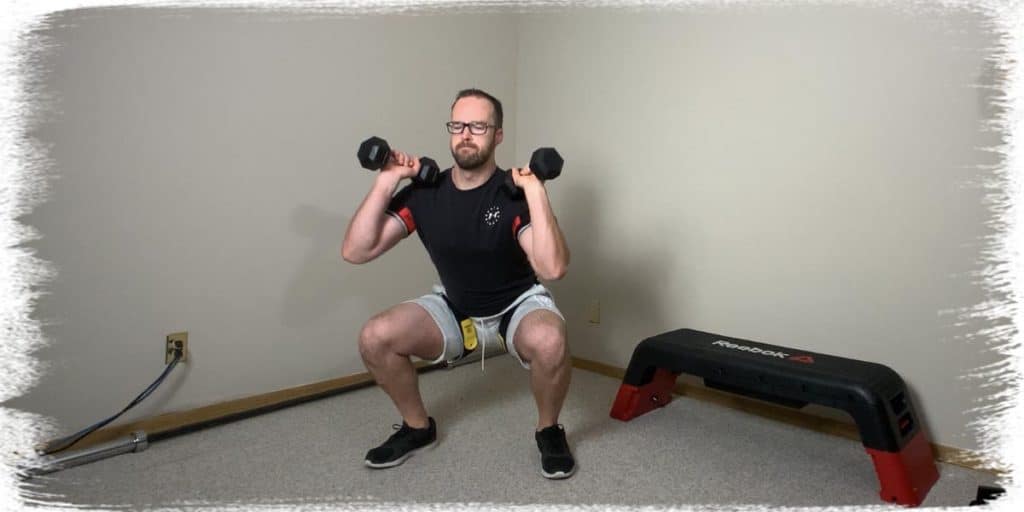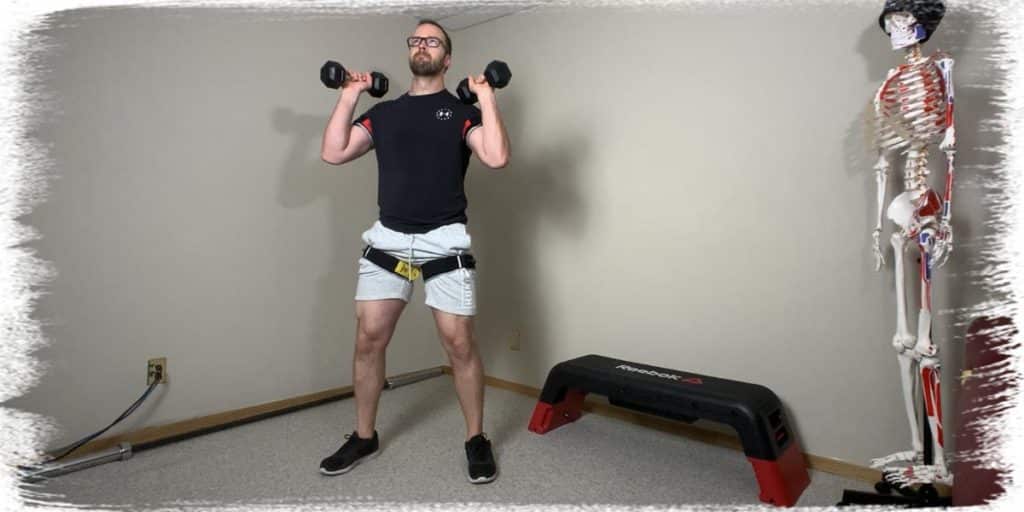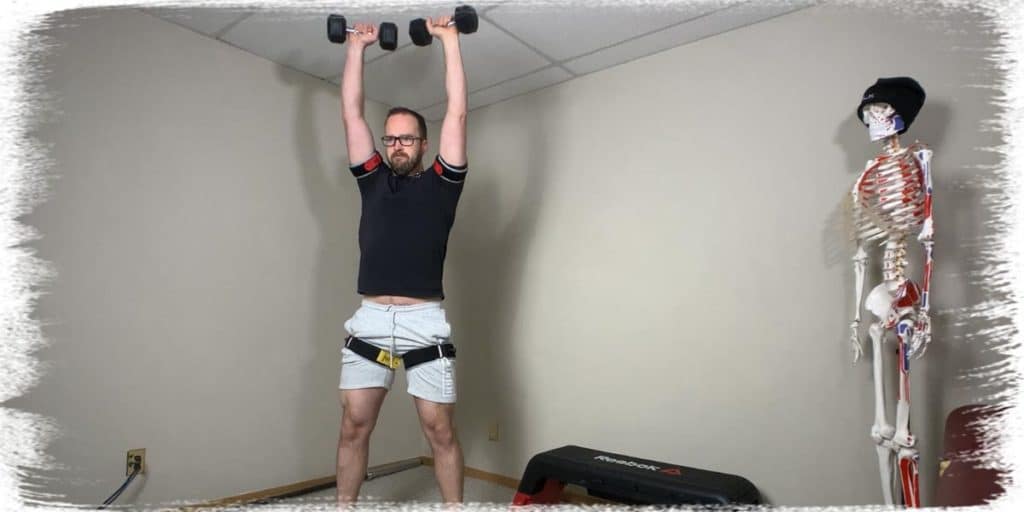There are plenty of exercises to choose from when selecting the best blood flow restriction exercises for getting bigger and stronger legs. However, for movements that maximize overall leg size and strength, there are a few tried-and-true exercises that are incredibly effective. You will learn why within this article.
The best leg exercises for BFR training maximize time under tension while creating the most significant metabolite change within the blood. These are compound movements that include:
• Kettlebell swings
• Pulsed squats
• Bulgarian split squats
• Forward-backward lunges
Each of these classic exercises elicits the metabolic environment required within the body to help produce muscle hypertrophy and strength.
I’ve been researching and studying blood flow restriction (BFR) training since my days back in physical therapy school. As both a physical therapist and strength & conditioning specialist, I’ve adopted this training methodology into much of my clinical practice for the patients I treat and the clients I personally train.
So, if you want some expert advice on how to proceed with BFR training for your legs, along with why the exercises above are so ideal for producing significant changes in muscle size and strength while training at a relatively light load, then be sure to keep on reading!
And if you’re interested in the exact details as to how to perform blood flow restriction training or how it works, be sure to check out my following articles:
- What is blood Flow Restriction Training? How, Why and When to Use it
- Blood Flow Restriction: Evidence and Uses for Injury Rehabilitation
ARTICLE OVERVIEW (Quick Links)
Click/tap on any of the following headlines to instantly jump to that section of the article.
• Understanding time under tension for BFR training
• Understanding metabolite buildup within the blood
• The best leg exercises to perform for BFR training:
• Exercise 1: Kettlebell swings
• Exercise 2: Pulsed squats
• Exercise 3: Bulgarian split squats
• Exercise 4: Forward-to-backward lunges
• Bonus: Why you NEED to do thrusters for your leg BFR training
If you’re looking for a professional, high-quality blood flow restriction training system that has been designed by a team of medical professionals, my recommendation is the BStrong System (link goes to their website). This is the system I use for myself and my patients. You can use the code “JIMWITTSTROM” to receive 10% off of any purchase through their store. Please note: this is an affiliate link that provides me with a commission at no extra cost to you. I use these commissions to offset the cost of running this website.
Related article: In-Depth Product Review: B Strong BFR System (What You MUST Know)
Disclaimer: While I am a physical therapist, I am not YOUR physical therapist. As a result, I cannot tell you whether or not any treatments or training methodologies mentioned on this website or in this article may or may not be appropriate for you, including blood flow restriction training. By following any information within this post, you are doing so at your own risk. You are advised to seek appropriate medical advice for any pain you may be experiencing.
I want you to have maximal success with all aspects of your BFR training, so before we dive right into the best leg exercises to perform and how to perform them, it may be helpful to understand two central tenets for optimizing your BFR results. So, let’s quickly talk about time under tension for the muscles and optimizing metabolite buildup within the bloodstream.
Understanding time under tension for BFR training
One of the two critical principles to understand regarding BFR training is the principle of time under tension. This principle refers to the length of time a muscle or muscles need to be exposed to a load or resistance (how long the muscle(s) must be challenged during an exercise). While increasing time under tension is a great way to increase muscle size and strength with traditional (non-BFR) training, it’s also essential to adhere to this principle with BFR training, but likely for a slightly different reason than with conventional, higher load resistance exercises.
With BFR training, the longer your muscles are required to remain under tension, the more work they have to produce, and thus, the more fatigued they tend to become. For muscles to contract and accomplish movement, they need to utilize available energy within the body. In the process of utilizing this energy, they produce various metabolic byproducts. The more work they produce, the greater the buildup and concentration of these byproducts within the muscle itself as well as the bloodstream.
Think of it like this: your body is a car, the energy in the body is the gas tank, and the exhaust is the metabolic “junk” that your body produces due to using the gasoline to keep the engine running.
So, to get a significant buildup of metabolites, muscles have to work for a more extended length of time (either through slower movements, higher repetitions, or both). But why is it so important to produce these metabolites for BFR training? Well, let’s dive into the next section to find out!
Understanding metabolite buildup within the blood
The second critical principle to understand with BFR training is metabolite buildup within the working muscles and extremities (in this case, your legs). The exact details of this topic are beyond the scope of this article, but make sure you understand the general principle. It will help ensure better success with your BFR training when it comes to increasing leg size and strength.
To read up on the specifics, be sure to check out my article: What is Blood Flow Restriction Training? How, Why and When to Use it
Unlike traditional strength training, which largely relies on creating mechanical micro-trauma to the working muscles to produce muscle size and strength adaptations, BFR training does not rely on this principle. Instead, it relies on the principle of metabolite buildup within the working extremities.1–7
Think of traditional strength training as relying on a mechanical or physical effect to the muscles and BFR relying on a chemical effect. It’s a bit overly simplistic in that regard but serves to quite nicely differentiate the primary principles between the two.
To get the greatest possible extent of metabolite buildup, you need to opt for moderately high repetitions with relatively short rest breaks between sets.8–10
With BFR bands wrapped around your extremities, this results in a surprising amount of muscle fatigue in a relatively short duration of time. Aim to use a resistance load of 20-30% of your one-repetition maximum (1RM) when measured without wearing any BFR bands.
The literature is pretty clear that this load combined with higher repetitions and shorter rest breaks produces statistically significant increases in muscle size and strength with BFR training.
The best leg exercises to perform for BFR training
While there are plenty of additional great exercises aside from what’s covered within this article, I’ve selected movements that meet the requirements for creating optimal hemodynamic (changes within the blood) required for BFR training without requiring expensive or specialized equipment.
For this article, in order to benefit as many readers as possible, I’ve selected exercises that can be done at home or at a gym!
Therefore, you won’t see exercises such as leg press on this list. While such a machine provides some solid exercises for this training style, not many people have a leg press machine at home. This article aims to provide incredibly effective and practical BFR leg exercises that can be done at home (or in a gym) with minimal equipment. And believe me, the following exercises will get the job done just fine when it comes to getting bigger and stronger legs.
Related article: Proven by Science: Best Blood Flow Restriction Exercises for Seniors
Remember, this is not an exclusive list, so as long as you understand what these exercises aim to achieve, you can select other similar exercises and variations as well. But, start with the following movements, especially if you’re new to BFR training.
Exercise 1: Kettlebell swings
When performing BFR training for the legs, the kettlebell swing is an absolute staple of an exercise for creating the optimal metabolic environment within the leg muscles and lower extremities in general. It’s an excellent exercise for several reasons (provided you know how to do it correctly and it’s appropriate for you).
Since kettlebell swings combine squatting with hip hinging, it essentially nails all of the muscles of the anterior compartment of the leg (the quadriceps) and the posterior chain muscles. This includes the hamstrings and spinal erector muscles. There are some large volumes of muscle activity involved with the lower body for this movement!
With the kettlebell swing picking on all of the large muscle groups within the legs, these muscles are forced to perform powerful contractions, requiring high amounts of energy for each repetition to complete the movement. The result is a rapid buildup of metabolites within the bloodstream and working muscles, which is precisely what you’re trying to create when performing BFR training.
Pro tip: If you’re serious about building up the most extensive metabolically favorable environment possible in your body when performing kettlebell swings, throw on some BFR armbands in addition to your leg bands when performing this exercise.
Since the kettlebell swing is a full-body exercise, you’ll build up a bunch of metabolites in your arms in addition to just your legs — this will allow for an even greater physiologic response from your body when it comes to strengthening your legs. Remember, the more metabolites you build up in the body, the larger the response to the muscles you just exercised will be.
How to perform kettlebell swings:
It’s essential to have ideal mechanics and be proficient with the kettlebell swing. Continuous movement errors on each swing, even if only minor, can lead to some nasty lower back issues.
Learning and mastering the mechanics required for the kettlebell swing is beyond the scope of this video. Thankfully there are a plethora of great videos on YouTube that can help you out. So, find a good video and make sure you’re confident with your swings, as you’ll be performing them with a decently high volume (number of sets and repetitions) when it comes to sticking with BFR training.
Exercise 2: Pulsed squats
Pulsed squats don’t look much different than traditional and more standard-style squats, but they are massively different in terms of how they will feel; they will produce an exorbitant amount of muscle fatigue that you’ll need to fight through. But the results will be worth it, as you’ll create the optimal environment within your body to reap the muscular and strength-based rewards that you’re after.
Pulsed squats are effective since they produce maximal amounts of time under tension throughout each set you perform. By not returning to a full, standing position between each rep, you’re forcing the leg muscles to stay under continual tension. This will become rather fatiguing after a handful of reps.
How to perform pulsed squats
Performing the pulsed squat is almost the exact same as performing a standard squat, with one minor variation: You don’t return to a full, standing position at the end of each rep.
Instead, you stop approximately 10-20% before standing ugly upright. In other words, your knees are never straight or locked out throughout the entire set of repetitions.
- Pick your squat style of choice (goblet squat, barbell back squat, front squat, etc.)
- Squat down in a controlled manner as far as desired.
- As you begin the concentric phase of the movement (the phase where you begin to move upwards, out of the squat), do so in a controlled manner.
- Move upwards until you’re approximately 80 – 90% back to your starting position. Stop here (your knees should have a slight bend, and you should still feel that your quadriceps muscles are engaged).
- Immediately start dropping down into your squat again and repeat this process for the desired number of repetitions. With a traditional BFR load, opting for approximately 15 repetitions is likely a sweet spot to pick.
Exercise 3: Bulgarian split squats
The Bulgarian split squat (sometimes known as a rear-foot-elevated squat) is an exercise with a notorious reputation for building some thick and powerful legs in those who incorporate them into their training. It’s an excellent exercise for hammering the muscles around the hips in addition to the quadriceps muscles.
Most lifters tend to hold onto some extra weight when performing the traditional Bulgarian split squat to provide their leg with an appropriate amount of resistance. However, when performing this exercise with BFR bands, there’s rarely any need to hold onto extra weight. This is especially true if following the 30/15/15/15 protocol, which is so often studied in the BFR literature. For most people, just their bodyweight alone will put them around their leg’s 30% 1RM (repetition maximum) required for the optimal BFR effect.
How to perform the BFR Bulgarian split squat
Perform this exercise just as you would for a traditional Bulgarian split squat. If you’re able to get the desired number of repetitions outlined in the 30/15/15/15 protocol, try to perform the repetitions even slower, creating a more significant time-under-tension effect.
There’s no major reason to use much (if any) external resistance with BFR Bulgarian split squats since you want to make sure that you’re not using more than around 30% of your leg’s 1RM.
Exercise 4: Forward-to-backward lunges
When it comes to BFR training, the forward-to-backward lunge is a potent leg exercise for creating the optimal metabolic environment. What’s even better is the fact that you’re working both legs at the same time! The result is a rapid and effective way to produce the needed buildup of metabolites within your legs, allowing BFR training to elicit its effects.
How to perform the forward-to-backward lunge
Performing this exercise is relatively straightforward (no pun intended). The key, if possible, is to avoid pausing in the transition phase of the movement; you want to swing right from the forward lunge right into the backward lunge and vice versa. This increases the continual time under tension with the stance leg. But again, it’s not just the stance leg that will be working aggressively; the moving leg will be doing a lot of work as well.
- From a standing position, pick a leg and step out in front, dropping down into a front lunge.
- As you push back, try to push back with enough force that your leg swings past the standing position you started in, immediately swinging through into a backward lunge.
- Make sure your foot is stable on the ground for a brief second before dropping down into the backward lunge; you don’t want to lose your balance and fall over.
- Push up with enough force to swing the leg past the standing/starting point and drop right down into a front lunge. Repeat this process for the desired reps.
- After completing all of your reps, switch legs and repeat the process.
Bonus: Why you NEED to do thrusters for your leg BFR training
If you’re serious about maximizing your muscle size and strength gains with BFR training – even if it’s just for your legs – you need to create the maximally-induced metabolic environment possible within your body.
This means that generating metabolites not just in your legs but also in your arms is a wise move to make; the more metabolites you generate (and thus release) into systemic circulation (throughout your body), the greater the physiologic response your body will make when it comes to taking care of your leg muscles after your workout.
This is where dumbbell thrusters come into play. If you’re not familiar with this exercise, it’s essentially combining a squat and an overhead press and performing them in one continual movement. Overhead presses require a lot of muscle activation within your arms to complete the movement. With BFR bands around your arms, this movement will generate a sizeable metabolic change in the working arm muscles and the bloodstream within each arm.
How to perform thrusters
You can perform thrusters with a barbell, dumbbells, kettlebells, or any other object that you can hold onto and press overhead.
- For the movement, hold the weight at around chest height while performing your squat (essentially, a front squat). As you come out of the squat and return upwards, begin to press the weight you’re holding onto overhead. The squat and the overhead press should be timed so that they blend into one continuous movement.
- Once the weight is fully overhead, bring your arms back down. As your arms near the chest height that you held the weight when squatting, begin to drop down into your squat, again in one seamless and continuous movement.
- Repeat for as many repetitions as desired, and be prepared to fight through the burn!
Final thoughts
If you want to get the most out of BFR training for increasing the muscle mass and strength within your legs, you’re going to need to stick with exercises around 20 – 30% of your 1RM while doing higher volumes of repetitions for compound-based movements.
These compound movements will elicit the most favorable environment for the working muscles and the extremities when building up the amount of metabolites within the body for the BFR training to take effect.
If you stick with these training concepts, stick with these exercises and do so for a couple of months in a row, the odds are very good that you’ll increase the size and strength of your legs without the need to lift traditionally heavy loads in the process.
So get at it! Get bigger, get stronger, and have a little fun along the way!
References:
5. Takano H, Morita T, Iida H, et al. Hemodynamic and hormonal responses to a short-term low-intensity resistance exercise with the reduction of muscle blood flow. Eur J Appl Physiol. 2005;95(1):65-73. doi:10.1007/s00421-005-1389-1

Hi! I’m Jim Wittstrom, PT, DPT, CSCS, Pn1.
I am a physical therapist who is passionate about all things pertaining to strength & conditioning, human movement, injury prevention and rehabilitation. I created StrengthResurgence.com in order to help others become stronger and healthier. I also love helping aspiring students and therapists fulfill their dreams of becoming successful in school and within their clinical PT practice. Thanks for checking out my site!

